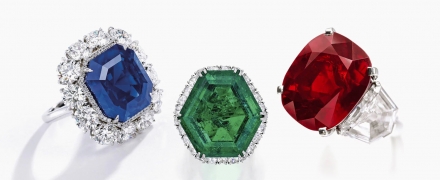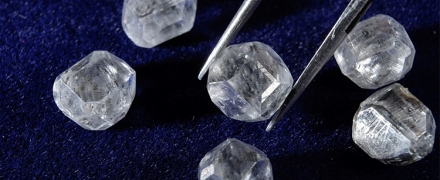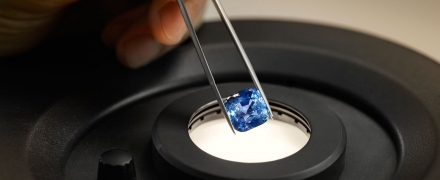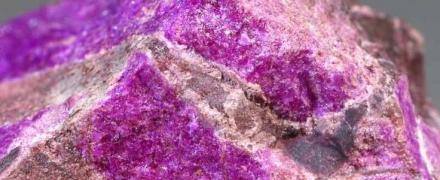open 10 am - 7 pm
laboratory is closed
50 оттенков розового
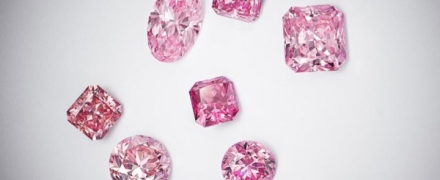
Эта заметка посвящена алмазам, имеющим в своей окраске необычный розовый оттенок. Как классифицировать такие камни – один из актуальных вопросов, стоящих перед практикующими геммологами.
В российских законодательных актах (ГОСТ) розовый оттенок в перечне ординарных цветов не предусматривается, также не вполне определено положение камней с розовым оттенком и в более ранних документах, таких как «технические условия…» (ТУ).
В зарубежной практике для камней с не характерными цветами вводится понятие эквивалентных цветов. То есть неординарные окраски, такие как розовые, голубые, зелёные, фиолетовые, рассматриваются по несколько иной, отличной от классификации жёлтых камней системе. При оценке таких цветов градацией служат «эквивалентные» цвета, охватывающие не буквенный интервал цвета, а целую группу таких интервалов.
Так выделяются группы цветов «Faint color», «Very Light», «Light», не имеющие приставки «Fancy» («Фантазийный»). Камни, которые имеют более насыщенную окраску, являются фантазийными и для них перед описанием цвета добавляется характеризующее насыщенность окраски слово «Fancy» («Фантазийный»). В розовой гамме фантазийных цветов выделяют следующие степени окраски – «Fancy Light …», «Fancy …», «Fancy Dark…», «Fancy Intense…», «Fancy Deep …», «Fancy Vivid…», «Fancy Red…». Камни последней степени градации являются наиболее редкими в группе розово-красных камней.
Но помимо редкости цвета и высокой стоимости таких камней, многие розовые камни выделяются одной замечательной особенностью – они проявляют плеохроизм, то есть в зависимости от положения осмотра камня он может иметь дополнительные оттенки – оранжевый или пурпурный. Особенность такого поведения бриллианта, как изотропного камня, объясняется природой цвета розовой окраски в большинстве камней. Помимо того, что симметрия дефектов, вызывающих розовую окраску в алмазе отлична от кубической, эти центры окраски ориентированы в камне не хаотически, а в соответствии с определёнными кристаллографическими направлениями. Как правило, такие направления совпадают с плоскостями пластической деформации или двойниковыми швами, что обуславливает неоднородность, создаваемой ими окраски в зависимости от ориентации камня относительно наблюдателя – перпендикулярно или параллельно к такой плоскости.
В геммологической практике бывают весьма увлекательные случаи с диагностикой ювелирных вставок
Currently, gemstones are produced by two fundamentally different technological methods - the High Pressure - High Temperature method (“HPHT”, High-pressure & High-temperature) and the Chemical Vapor Deposition (“CVD”, Chemical vapor deposition) method. The "HPHT" method is the most tested classical synthesis method, which can be used both carbon deposition on diamond from flux melts and catalytic reactions. In "CVD" synthesis, diamond growth occurs on a seed during carbon deposition mainly from a gaseous medium at relatively low temperatures and pressures.
Jewelry and precious stones are just such a category of goods, when buying which you need to pay attention to many criteria.
Sogdianite is a rather rare mineral and more often it can be found as a collection material (moreover, in systematic collections), and it is extremely rare in jewelry.
Tauson Lev Vladimirovich (October 27, 1917 - November 23, 1989), an outstanding Soviet geologist and geochemist, member of the USSR Academy of Sciences (since 1981).


